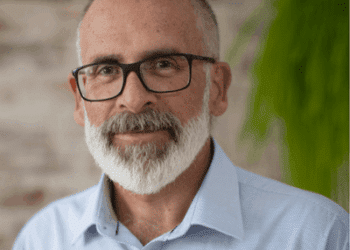Having recently returned from the US where I saw how technology can revolutionise access to financial advice, I see no reason why Australia can’t follow suit and even surpass the US in providing sophisticated financial advice to more and more people. Working closely with Andy Rachleff, founder and executive chairperson of Wealthfront, one of the largest digital financial advisers in the world, gave me firsthand experience and a deep understanding of how digital solutions can be the key to financial security for all.
Here in Australia, we have significant work to do to ensure more Australians can access quality financial advice, but one thing we know for sure is that the solution has to be digital.
The main hurdle seems to be the outdated assumption that people need direct contact with a human adviser to deliver personal advice. From my experience in the US, that’s simply not true – digital advice can be incredibly effective on its own. We offered phone consultations and made support lines visible, assuming that people would want to speak to a qualified adviser. What we found was that less than 1 per cent of clients actually called for support. If they could find the answer in the app, they were thrilled, and if the website was designed to answer their questions, they never needed to reach out.
This is why after growing to nearly 800,000 clients, Wealthfront still has under 20 qualified financial advisers as support staff, making that 40,000 clients serviced by one adviser. That’s the beauty of technology – everyone receives the same quality advice, tailored to you, at a fraction of the cost.
In the US, we found that people paid us specifically so that they would not have to talk with a human. As Andy Rachleff said: “If you’re completely transparent in what you do, charge a fair and low fee, and keep everything clear – do you need to talk to someone?”
He also noted: “What might surprise people is that the biggest draw of our service is that we do everything through software. The more people who use the software, the more useful it becomes because it can analyse the data it accumulates to discover patterns that humans couldn’t possibly spot. This success of digital advice in the US comes down to automating the financial planning process.”
We rely on our phones for everything these days, whether it’s using Uber to call a ride, DoorDash to deliver takeaway, or simply checking the weather. Why can’t we receive real-time financial advice directly from our phones? And why can’t it be better, more accurate, and cheaper than sitting down with a human adviser telling you what to do?
What’s clear is that in Australia, the challenge is making advice more affordable and demonstrating its real value. We can do this by showing people how things like mortgage payments, credit card debt or super balances would look with advice versus without it, giving them a tangible way to see the benefits. Essentially, it’s about showing what their life could look like with advice versus without advice.
I’ve seen digital advice work in the US and in my opinion, Australia is better positioned to distribute financial advice digitally than we think. Two key government decisions will allow Australia to advance in financial literacy if we can embrace the power of technology.
With the increased scrutiny on the quality of financial advice given to Australians over the past five years, this has squeezed out 43 per cent of exiting human financial advisers unwilling to re-register under the new requirements, meaning that more and more Australians are going unadvised and in need of a solution.
Super funds will soon be required to provide financial advice to ALL members at an affordable price, not just those with larger balances. With over 2.5 million Australians retiring in the next 10 years, that’s a significant number of people who could truly benefit from sophisticated financial advice, if only they had access.
There are other digital advice companies in the US that focus on a hybrid model, believing, like many here in Australia, that a human adviser coupled with technology is the best approach, and they charge accordingly. This approach can work, however, what we found at Wealthfront was that people just liked to know that a phone number was available if they needed it – but they rarely used it. Wealthfront’s client numbers and assets under management, sitting at $60 billion-plus, are proof that digital-first works in that market.
Software can outperform traditional financial advisers because it provides an unlimited number of customers with important services that had previously been available only to the very wealthy. We’re on cusp of significant change in the industry, and this is something I’m really excited for.
Joanna Lawson, head of product strategy, Otivo




Self interested dribble. First step should be making financial advice easier to provide in a licensed manner irrespective of this being F2F or digital. There isn’t a decent financial planning software product in Australia because our market doesn’t justify the upfront development costs, though there are plenty of inadequate products that claim to do more than they actually do. For the record I’m aware my comment is also self interested dribble.
Just waiting for the AI calamity when the next big ‘GFC like’ market correction occurs. Your call is important to us but we have done away with humans & you are on your own.
Well may we say God save the financial adviser because NOTHING will save the specialist risk adviser (with apologies to Gough).
Billions of people worldwide regularly eat McDonald’s thinking it’s real food, but doesn’t mean it’s good for them.
Fake news they are delicious and healthy I should know lol
It sounds great in theory, but how are clients protected from scams? If the client never meets an advisor, it is open to scams that clients would have difficulty spotting. I’d be interested to hear the solution to stop this from occurring.
Interesting article.
Zoom automatically summarised my 1-hour client meeting into a well articulated file-note, complete with bold headlines, underlines and perfectly articulated bullet-points – I was so impressed…. with myself.
Hey, AI… can you do something about that Jones’ boy? He keeps ducking, weaving and spinning in an attempt to keep punishing us advisers.
40,000 clients per adviser just shows how removed the author is from the regulatory environment and what’s required from advisers to ‘service’ a client with an ongoing relationship. I’m all for digitisation improving efficiencies and processes but that should not be at the cost of what advisers do best. Human connection and not feeling part of a faceless practice must be at the forefront of any integration of digital solutions
I’m not sure about her maths either…..she states in the article that of their 800,000 clients less than 1% wanted access to an Adviser…..maybe 350-400 clients per Adviser then. The rest are getting generic answers to their questions from an AI Bot.
The word ‘advice’ is bandied around far too much. A digital ‘Adviser’ running on an algorithm can only provide responses based on inputs. You tell it you are an experienced investor with a high risk appetite, boom you’re now invested in an Aggressive portfolio. Is that advice?
There’s no doubt digital providers will do well in the future because the next generation wants to find all their answers online, and will believe everything they read. Then they go and speak with a real Adviser only to find that the insurance policy they bought online is non-underwritten rubbish, their super funds low fee index option is too conservative for their age and investment timeframe, bitcoin can and will go down in value, you can’t buy a holiday home through an SMSF even if the property spruikers say you can etc.
Take the word advice out of the equation and just call it information.
She’s actually correct – but by hiding behind an anonymous facade it’s hard to take your views seriously. The thing is advisers that want to provide advice on a scaled basis can achieve this and serve a social purpose – by understanding technology delivered advice is an enabler not a foe. Probably worth thinking about how to use it instead of condemning it without even seeing it’s capability.
Interesting to hear more on Joanna’s background and experience. Plus as someone who is not a financial adviser, interesting to hear some of the feedback here from perhaps those directly in the financial advice industry? As someone who actually uses this service, I can vouch it is helping. I feel it is designed for your more simpler/entry level advice, on some basic topics like Debt/Super/Insurance. Yes, there are a few bugs here/there, but knowing this is a new area, I am giving it the goodwill it deserves. The advice it gave on insurance breakdown was alone worth the yearly subscription in my opinion. As always, there is a place for digital and a place for human advice. Digitisation is not stopping any time soon, so good to see we have more options to the public for basic financial advice. And while I know I am posting as anonymous, my name is Conor, and I stand by what I said here. Thanks